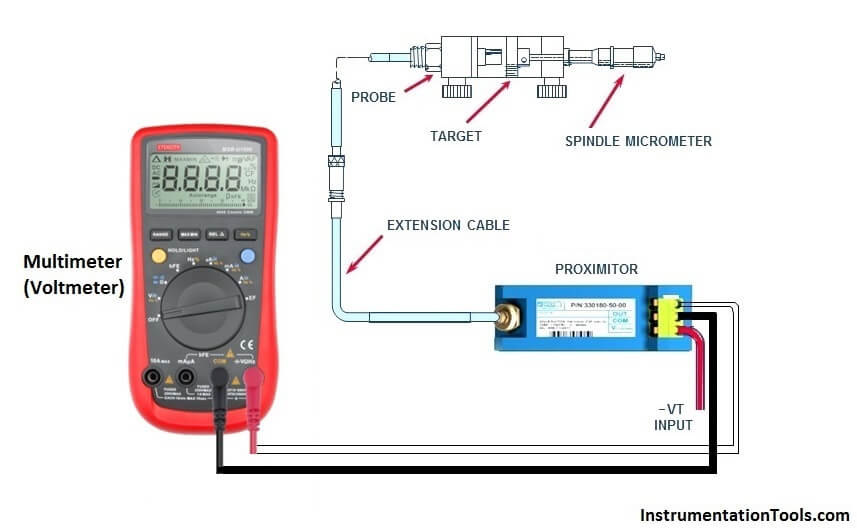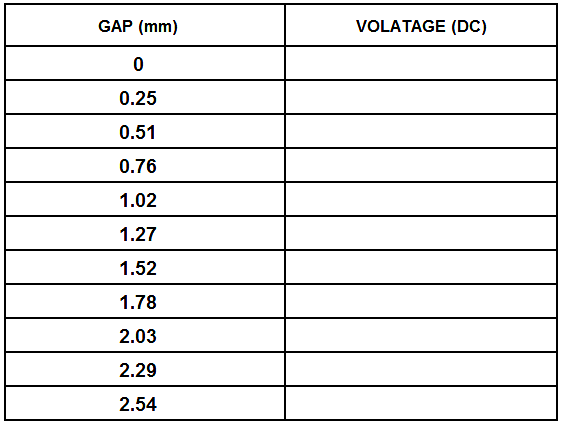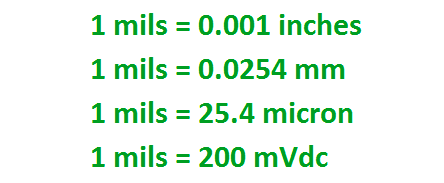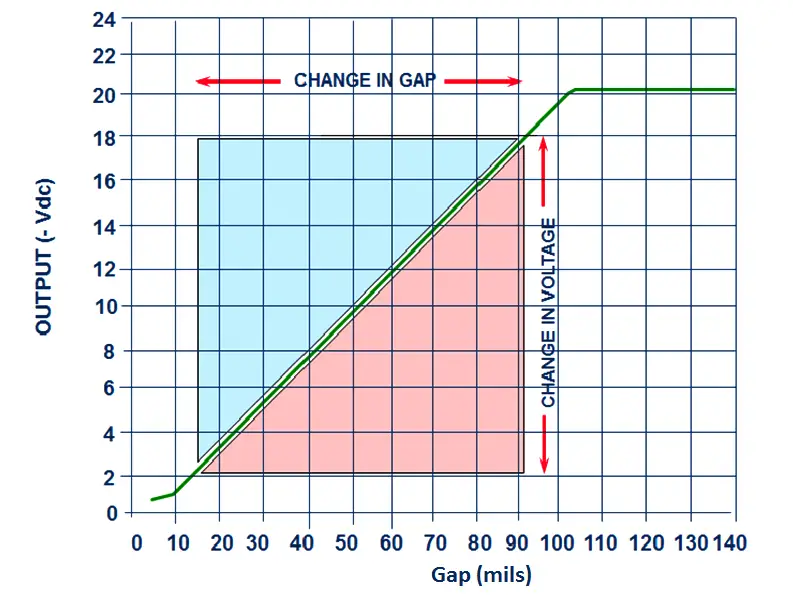Bently Nevada Vibration Probes Functional Testing
Objective :
To check the characteristics and
Principle:
Proximity transducers use Eddy Current principle to measure the distance between the probe Tip and the surface to be observed.
The proximeter generate a low power radio frequency (RF) signal. This RF signal is connected to a coil of wire inside the probe tip by the extension cable.
When No conductive material is within the range of RF signal which surrounds the probe tip, virtually all of the power released to the surrounding area is returned to the probe.
When a conductive surface approaches the probe tip, the RF signal sets up small eddy currents on the surface. These eddy currents creates a measurable power loss in the RF signal.
When vibration tip nearer the target the greater the power loss. The system uses this power loss to generate as output voltage.
The output voltage of the proximeter is linearly proportional to gap over a wide range.
Required tools:
- Multimeter
- Micrometer
- TK-3
Also Read : What is TK-3
Equipment Setup:

Procedure: Follow the following steps
1) Physically check the vibration probe and extension cable for any damages, if it is please Replace with new one.
2) Check resistance of vibration probe and continuity of extension cable it should be in between 5 To 9Ω and 5 to 20 Ω (resistance value varies from model to model)
3) Place the vibration probe on TK-3 spindle and adjust to the target plate surface and make sure the scale should be zero.
4) Connect multimeter on proximeter common and Vout terminals. Apply input voltage.
5) Measure the output voltage (multimeter reading) and increase the target distance in the TK-3 calibrator and follow the same steps as per given table and note down the output voltages at different displacements (gaps).

6) After this make a graph which shows the relation between gap and voltage.
7) If graph is linear in between 10 mils to 80 mils then probe is in good condition.

Proximitor Calibration graph :

Note : Change in gap is within 80 mils Linear Range which is in between 10 mils and 90 mils
its a very good n easy for learn i like too much this article
Why using negative voltage? -24vdc
Hi, check this article, CLICK HERE
Thank you for the article, there is a mistake in the graph though : Gap is in mils not in millimeters.
Corrected. Thanks for your efforts & updates.
Incremental Scale Factor (ISF) is just as important as Average Scale Factor (ASF). For a better proximity transducer system verification, one can easily refer to Bently Manuals. They have written the procedure in a clear and concise manner.
Another important thing, need to confirm machinery shaft material as well whether the proximitor used is modified for linearity other than AISI 4140 (typical material for shaft). You can see physically a ‘MOD’ sticker with details on it, on the side of the proximitor itself. Performing a verification check using a MOD proximitor against a standard AISI 4140 spindle micrometer will render the result invalid.
In Bently Neveda Vibration Measurement, Some Equipments are having Proximitor sensor model like 330180-X1 not having scale factor 200mv/mil. Because it not Calibrated by AISI 4140 but by some other metal target place. In that case , we should not use 4140 target material disc. We have to buy corresponding material target button.
i couldn’t find the manual from bently nevada that talks about the procedure for checking or calibration te sensor*proximiter , could you please refere to this document or give me the link to it thanks